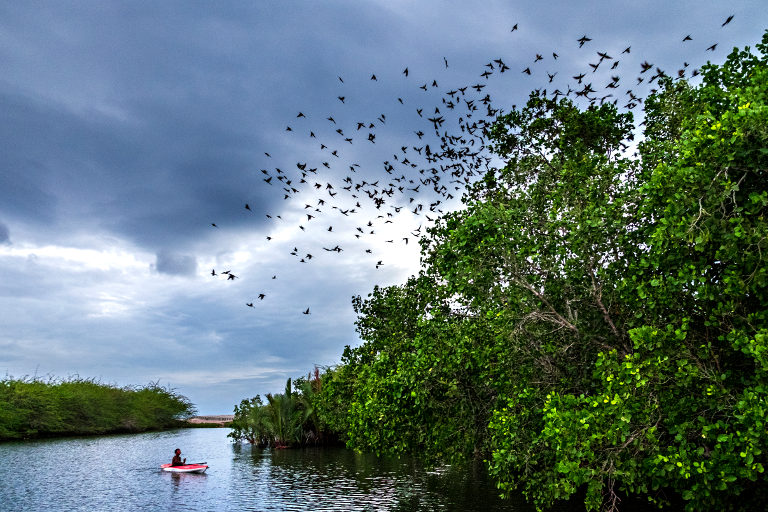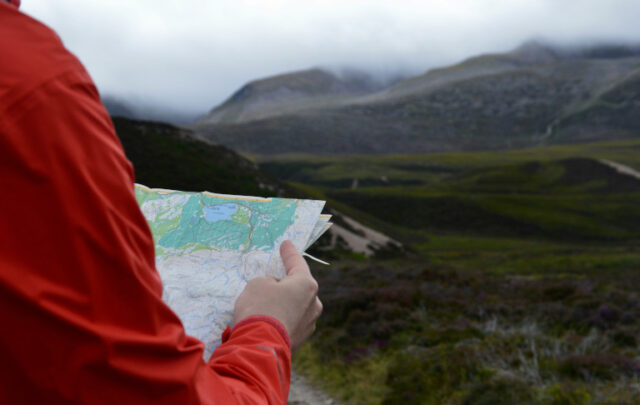A new risk landscape
The COVID-19 pandemic began as a localized disease outbreak in Wuhan, China in December 2019 and quickly spread to nearly every country, causing massive impacts on global health, political systems, businesses, and economies worldwide. Many people called it a Black Swan event – a rare and surprising outlier occurrence, with extreme impacts.
But global shocks like COVID-19 are no longer an exception or a rare occurrence. In fact, the pandemic serves as a warning of a new global risk landscape in the Anthropocene. In contrast to the Holocene (the past 12 000 years of relative Earth system stability), the Anthropocene has been described as an unpredictable era, where human activities are changing the dynamics and functioning of the earth itself. In the Anthropocene humanity will increasingly face cascading and global shocks like pandemics, financial crashes, and synchronized food shocks. For example, research shows that the way we have transformed much of the planet in order to produce more food, fiber, and fuel, is creating new conditions for systemic risks to emerge. Research further shows that we are edging closer and closer to “tipping points” in the Earth’s system — points beyond which small incremental changes could trigger large-scale, potentially cascading — and unstoppable — changes across our atmosphere, carbon cycles, and terrestrial, marine, and freshwater ecosystems. COVID-19 revealed how vulnerable our global society is to systemic and cascading risks.
Against this backdrop of increasing instability and uncertainty, it is clear that we need a more resilient and sustainable future, one that is better prepared to deal with global shocks.
Resilience as a misused buzzword
Resilience is a concept that scientists have been working on and fine-tuning for decades. It is a central feature of the global climate change and development policy arena, and today, “resilience” is everywhere. For example, in the direct aftermath of the first wave of the pandemic, many global leaders including United Nations Secretary General Antonio Gueterres, International Monetary Fund (IMF) Managing Director Kristalina Georgieva, and European Union President Ursula van Leyden used the term ‘resilience’ to describe their institution’s COVID-19 response strategies.
As practitioners and researchers working with resilience, we welcomed the flurry of commitments by major policy actors and national governments, to make resilience a centerpiece of COVID-19 recovery and national stimulus plans. However, when we took a deeper look at these commitments, we found that resilience was often poorly defined. It was merely used as a general attribute for recovery or as a path to “bounce back” to pre-existing conditions as fast as possible. Where bouncing back would only leave people and systems as vulnerable as they had been before. Only a handful of countries cited resilience as a core objective of their COVID-19 stimulus plans.
The five attributes of resilience
Resilience is now increasingly factored into practice, policy and business, but its popularity threatens to dilute it. There are legitimate concerns that existing resilience strategies are failing to capture the type and scale of change needed. Resilience is much more than ‘bouncing back’ after a shock and returning to the status quo. It is about having the capacities to live and develop with change and uncertainty. This includes the ability of systems like communities, economies, and nations to absorb shocks, avoid tipping points, navigate uncertainty, innovate, and transform in the face of crises and vicious cycles It is a forward-looking approach that reflects how people and nature are linked and interact from local to global scales (e.g., local ecosystems and communities to the world economy).
Researchers have identified a number of strategies for enhancing resilience. By analysing this research, in a paper just released in Nature, we have identified five empirically established attributes that have been recurrently highlighted as essential for building and enhancing resilience. These attributes are diversity, redundancy, connectivity, inclusivity and equity, and adaptive learning.
Diversity. Investing in diversity provides flexibility and space for innovations to respond to change. For example, diversifying national and regional energy supply from highly centralized and fossil-fuel dependent infrastructure to more diverse and local renewable energy options will underpin resilient energy systems. Similarly, the resilience of food systems can be increased by promoting national crop diversity and transforming to diverse and sustainable forms of food production that reduce reliance on fossil fuels, water, pesticides and fertilizers.
Redundancy. Rather than increased efficiency as the only pathway to success, redundancy works with diversity to ensure that multiple options reinforce each other, thereby creating alternatives in the face of uncertain shocks and stresses. For example, dense and healthy mangrove forests can reduce storm surges by 66%. Coral reefs decrease wave strength and height. Together, both coral reefs and mangroves can further lessen the effects of storm surges and flooding. The capacity of ecosystems to contribute different options (e.g., food, coastal protection, medicine) for supporting human societies is being lost due to current rates of biodiversity decline. Similar erosion of redundancy can result from extreme economic specialization or highly concentrated supply chains.
Connectivity. Balancing connectivity is fundamental for resilience. High levels can promote recovery and enable shared learning during and after a disaster. The mobilization of grassroots communities in the Global South, for example, helped spread information regarding the pandemic and share lessons between communities to help promote recovery. But connectivity can also increase the potential for disturbances to spread, as demonstrated by how food security, especially in Africa, has been impacted by the war in Ukraine due to hyper-connected supply chains with cascading effects on health, social, and economic systems.
Inclusivity and Equity. Inclusivity and equity are critical for building trust and supporting collective action in responding to risk and change. More equal societies are less prone to instability and conflict. Likewise, more inclusive financial systems that expand access of communities and households, and in particular women and other groups most impacted by shocks and stresses, to credit, risk sharing and savings facilities provide greater household financial security and resilience during crises.
Adaptive Learning. Adaptive learning enables us to detect changes, learn from them, and tailor strategies appropriately. Social and institutional learning, in the form of maintaining the memory of responses to past crises, can promote practices that foster resilience. For instance, regular exposure to flooding and storms in Bangladesh has led to the creation of the Bangladesh Climate Change Trust Fund and the integration of climate change into all local and national planning processes, and across sectors. This supports better decision-making and governance and reminds us of the need to move away from exclusively top-down approaches.
Keeping Resilience Front and Centre
Numerous studies indicate that communities and systems display increased resilience in the aftermath of disasters. However, this resilience can wane over time. As society seeks to put the COVID-19 pandemic into the past and return to “normal,” we run the risk of creating vulnerabilities that will leave us unprepared for the uncertainties of the Anthropocene era.
To navigate rising turbulence and uncertainty, it is imperative that we recalibrate our way of living and conducting business. We must recognize the significance of diversity and redundancy and invest in social and environmental buffers. Emergency stockpiles of medical equipment, diverse food production methods, diverse energy sources, and the preservation of nature’s capacity to withstand stress and shocks are all examples of measures that can lead to a more resilient future.
Research on resilience underscores the centrality of equity in building societies that can navigate turbulence and change. In Africa, while causing devastation, the pandemic also demonstrated the resilience of the continent and its people. Rather than collapse and turn to conflict, despite high numbers of infections and severe economic hardships, many countries effectively mobilized health workers and communities to extend their health systems’ reach, capacity, and quality. African countries have demonstrated resilience in the face of shocks and stresses. Communities that have experienced manageable levels of stress (such as hard-won experiences with previous health crises) are likely to have crucial sources of resilience to draw on when major crises arise. The Global South, in particular, has valuable experience and insights from which we all must learn.
There is no better time than now to transform advancements in resilience science and practice into widespread action. Such action can create resilient and sustainable economies, societies, and ecosystems in a post-COVID-19 and increasingly unpredictable world.
Teaser photo credit: Mangrove forests host many bird species with generalised foraging niches. By FroyR – Own work, CC BY-SA 4.0, https://commons.wikimedia.org/w/index.php?curid=79411228





